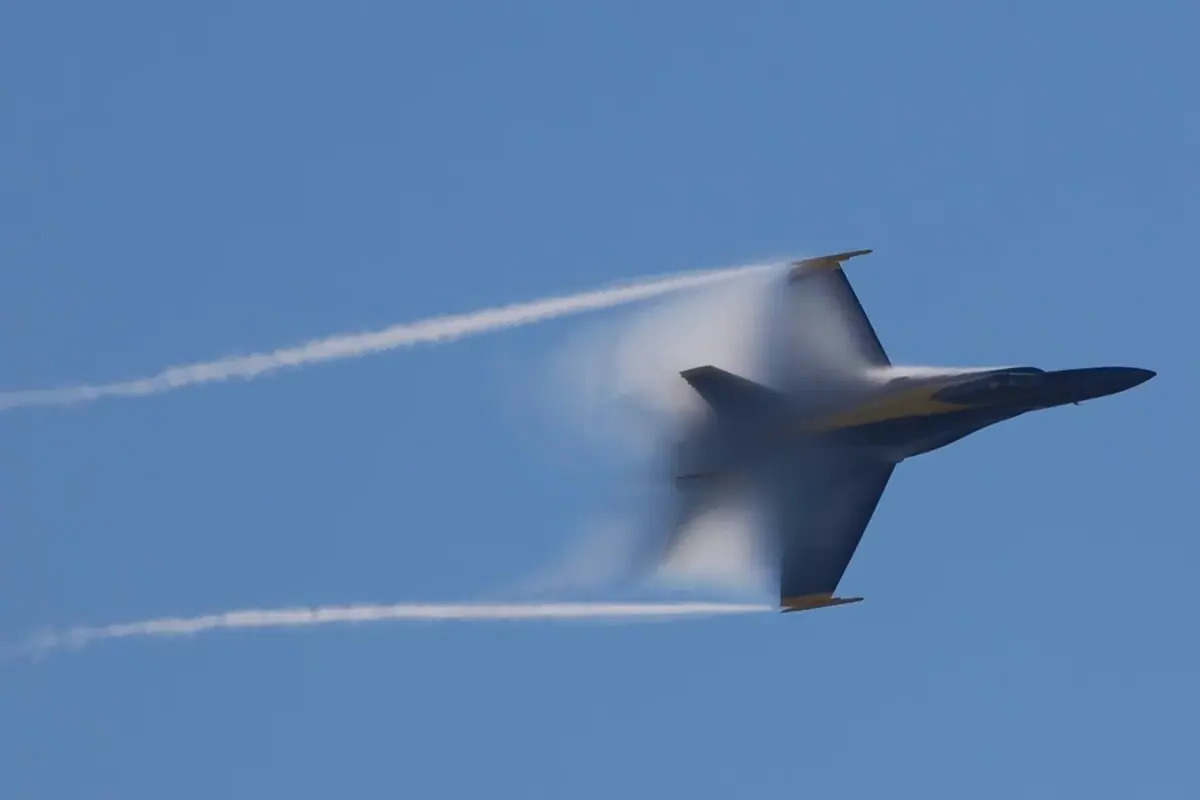
Did you know that the first supersonic flight happened on October 14, 1947? Chuck Yeager, an American pilot, broke the sound barrier in the Bell X-1 aircraft, nicknamed "Glamorous Glennis." This historic event marked a significant milestone in aviation history. Imagine flying faster than the speed of sound, experiencing the sonic boom that follows. Yeager's achievement opened doors for advancements in both military and commercial aviation. The Bell X-1, shaped like a bullet, was designed specifically for this groundbreaking mission. Pilots today owe a lot to this pioneering flight, which proved that supersonic travel was possible. Ready to learn more about this incredible feat? Buckle up!
The Dawn of Supersonic Flight
The first supersonic flight marked a pivotal moment in aviation history. Breaking the sound barrier was a feat that many thought impossible. Here are some fascinating facts about this groundbreaking achievement.
- The first supersonic flight took place on October 14, 1947.
- Chuck Yeager, a test pilot for the U.S. Air Force, was the man who broke the sound barrier.
- The aircraft used was the Bell X-1, nicknamed "Glamorous Glennis" after Yeager's wife.
- The Bell X-1 was rocket-powered, not jet-powered, which was crucial for reaching supersonic speeds.
- The sound barrier refers to the point at which an aircraft moves faster than the speed of sound, approximately 767 mph at sea level.
The Engineering Marvels
Creating an aircraft capable of supersonic flight required groundbreaking engineering and design. Here are some key facts about the technology behind the Bell X-1.
- The Bell X-1 was modeled after a .50 caliber bullet, known for its stability at high speeds.
- The aircraft was 31 feet long with a wingspan of 28 feet.
- It was powered by four rocket engines, each providing 6,000 pounds of thrust.
- The Bell X-1 had a maximum speed of Mach 1.06, just over the speed of sound.
- Engineers used a horizontal stabilizer to control pitch, a design still used in modern supersonic jets.
The Challenges Faced
Breaking the sound barrier wasn't just about speed; it involved overcoming numerous challenges. Here are some of the obstacles faced by Yeager and his team.
- Chuck Yeager flew with two broken ribs, which he kept secret from his superiors.
- The Bell X-1 had to be dropped from a B-29 bomber to gain enough altitude for the flight.
- Pilots experienced intense vibrations and shock waves as they approached the speed of sound.
- Early attempts to break the sound barrier resulted in several crashes and fatalities.
- Engineers had to develop new materials to withstand the extreme temperatures and pressures of supersonic flight.
The Impact on Aviation
The success of the first supersonic flight had a lasting impact on aviation and technology. Here are some ways it changed the world.
- Supersonic flight paved the way for the development of faster military aircraft.
- It led to advancements in aerodynamics and materials science.
- The achievement boosted American morale during the early Cold War years.
- Supersonic technology eventually made its way into commercial aviation, most notably with the Concorde.
- The flight demonstrated the potential for human ingenuity to overcome seemingly insurmountable challenges.
The Legacy of Chuck Yeager
Chuck Yeager's role in the first supersonic flight cemented his place in history. Here are some facts about his life and legacy.
- Yeager was a World War II fighter ace with 11.5 confirmed kills.
- He continued to serve as a test pilot, setting several more speed and altitude records.
- Yeager's autobiography, "Yeager," became a bestseller and inspired a generation of aviators.
- He was awarded the Presidential Medal of Freedom in 1985.
- Yeager's legacy lives on in the U.S. Air Force Test Pilot School, which trains the next generation of test pilots.
The Future of Supersonic Flight
The first supersonic flight was just the beginning. Here are some ways supersonic technology is evolving today.
- Companies like Boom Supersonic are developing new commercial jets capable of supersonic speeds.
- NASA is working on the X-59 QueSST, designed to reduce the sonic boom associated with breaking the sound barrier.
- Advances in materials and propulsion systems are making supersonic flight more efficient and environmentally friendly.
The Legacy of the First Supersonic Flight
The first supersonic flight changed aviation forever. Chuck Yeager's historic journey in the Bell X-1 on October 14, 1947, broke the sound barrier and opened new possibilities for air travel. This achievement wasn't just a milestone; it paved the way for advancements in both military and commercial aviation.
Yeager's courage and the innovative design of the Bell X-1 demonstrated human ingenuity and determination. This flight showed that breaking barriers, whether physical or technological, is possible with the right mix of skill and daring.
The legacy of this flight continues to inspire new generations of aviators and engineers. It reminds us that pushing the limits can lead to extraordinary breakthroughs. The first supersonic flight remains a testament to what can be achieved when visionaries dare to dream big and take bold steps into the unknown.
Was this page helpful?
Our commitment to delivering trustworthy and engaging content is at the heart of what we do. Each fact on our site is contributed by real users like you, bringing a wealth of diverse insights and information. To ensure the highest standards of accuracy and reliability, our dedicated editors meticulously review each submission. This process guarantees that the facts we share are not only fascinating but also credible. Trust in our commitment to quality and authenticity as you explore and learn with us.


